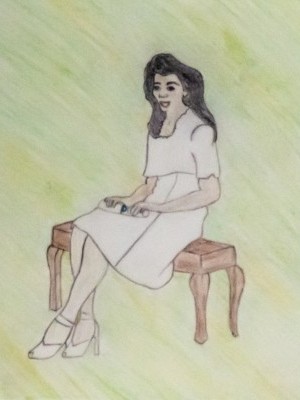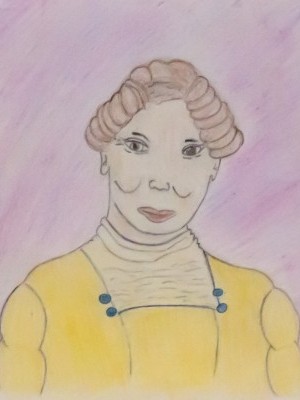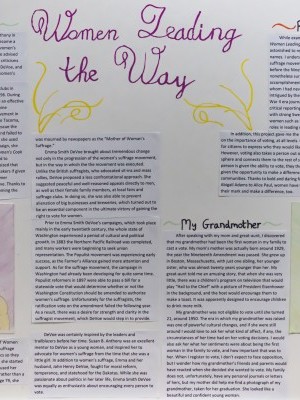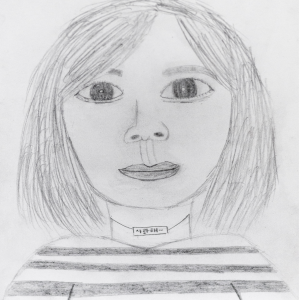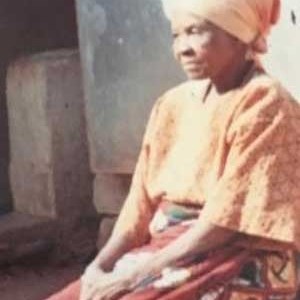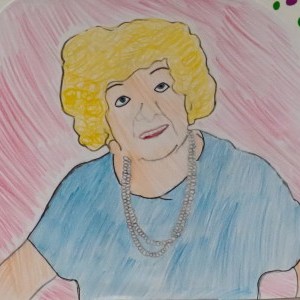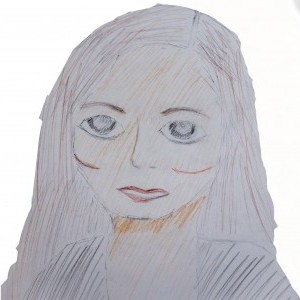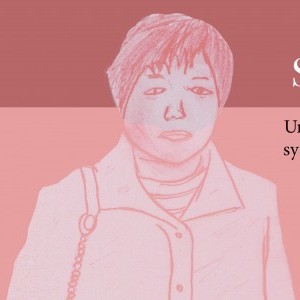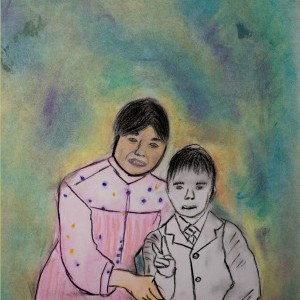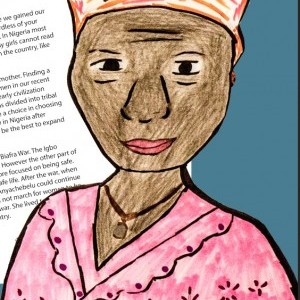Emily Bishop
The Stony Brook School | Stony Brook, NY | 9-12th Grade
Inspirational Family Member
My Grandmother
After speaking with my mom and my great-aunt, I discovered that my grandmother had been the first woman in my family to cast a vote. My mom’s mother was born around 1929. She grew up in Boston, Massachusetts, with just one sibling, her younger sister, who was almost twenty years younger than her. My great-aunt told me an amusing story, that when she was very little, there was a children’s program on television that would play “Hail to the Chief” with a picture of President Eisenhower in the background and the host would encourage them to make a toast. It was apparently designed to encourage children to drink more milk.
My grandmother was not eligible to vote until she turned 21, around 1950. The era in which my grandmother was raised was one of powerful cultural changes, and if she were still around I would love to ask her what kind of affect, if any, the circumstances of her time had on her voting decisions. I would also ask her what her sentiments were about being the first woman in the family to vote, and how important that was to her. When I register to vote, I don’t expect to face opposition, but I wonder how my grandmother’s friends and parents would have reacted when she decided she wanted to vote. My family does not, unfortunately, have any personal journals or letters of hers, but my mother did help me find a photograph of my grandmother, taken for her graduation. She looked like a beautiful and confident young woman.
Historical Figure I Admire
Emma Smith DeVoe
Prior to Emma Smith DeVoe’s campaigns, which took place mainly in the early twentieth century, the whole state of Washington experienced a period of cultural and political growth. In 1883 the Northern Pacific Railroad was completed, and many workers were beginning to seek union representation. The Populist movement was experiencing early success, as the Farmer’s Alliance gained more attention and support. As for the suffrage movement, the campaign in Washington had already been developing for quite some time. Populist reformers in 1897 were able to pass a bill for a statewide vote that would determine whether or not the Washington Constitution should be amended to authorize women’s suffrage. Unfortunately for the suffragists, the ratification vote on the amendment failed the following year. As a result, there was a desire for strength and clarity in the suffragist movement, which DeVoe would step in to provide.
After attending a speech made by Susan B. Anthony in 1856, eight year-old Emma Smith was inspired to become a suffragette. Her family encouraged her interest in women’s suffrage, particularly her father, an abolitionist, who advised her to hold her values tightly, despite the potential criticisms she might face. She eventually married John Henry DeVoe, and shortly thereafter began actively campaigning for women’s suffrage.
In her early career, DeVoe organized suffrage clubs in Idaho, and helped women gain the vote there in 1896. During this time she established a reputation for herself as an effective and engaging public speaker, with gentle and feminine manners. She supported the women’s suffrage movement in Oregon as well, until she and her husband moved to Tacoma, Washington, in 1905. DeVoe took it upon herself to rescue the women’s movement there, which had attempted and failed to achieve the vote for women, multiple times. While she used penny postcards and posters to advertise the campaign, she became famous for her cookbook, Washington Women’s Cook Book, published in 1908. In that book, DeVoe aimed to reinforce the domestic role of women. She emphasized that women would not abandon their duties as homemakers if given the vote, an idea that was useful in persuading former opponents of women’s suffrage to be less aggressive. Thanks to DeVoe’s strategies, Washington succeeded in becoming the fifth state in America to grant women’s suffrage.
In 1911 DeVoe founded the National Council of Women Voters, which was designed to help states with no suffrage movements, as well as educate women about politics so they could decide how they wanted to vote. Later in life, she started writing a column in the Tacoma News Tribune, and used her platform to popularize the idea of voting on issues rather than a political party. When she passed away in 1927, at age 79, she was mourned by newspapers as the “Mother of Women’s Suffrage.”
Emma Smith DeVoe brought about tremendous change not only in the progression of the women’s suffrage movement, but in the way in which the movement was executed. Unlike the British suffragists, who advocated sit-ins and mass rallies, DeVoe proposed a less confrontational approach. She suggested peaceful and well-reasoned appeals directly to men, as well as their female family members, at local fairs and suffrage clubs. In doing so, she was also able to prevent alienation of big businesses and breweries, which turned out to be an essential component in the ultimate victory of gaining the right to vote for women.
DeVoe was certainly inspired by the leaders and trailblazers before her time. Susan B. Anthony was an excellent mentor to DeVoe as a young woman, and inspired her to advocate for women’s suffrage from the time that she was a little girl. In addition to women’s suffrage, Emma and her husband, John Henry DeVoe, fought for moral reform, temperance, and statehood for the Dakotas. While she was passionate about politics in her later life, Emma Smith DeVoe was equally as enthusiastic about encouraging every person to vote.
What the Project Means to Me
While examining the list of names from the painting, Women Leading The Way: Suffragists & Suffragettes, I was astonished to realize that I recognized no more than twelve names. I understood from my history classes that the women’s suffrage movement had evolved and developed for many years before the Nineteenth Amendment was passed, yet I was nonetheless surprised by some of the incredible accomplishments these female leaders had made, most of whom I had never even heard of before. For example, I was intrigued by the story of Dorothy Thompson, the pre-World War II era journalist who was driven out of Germany for her critical reporting on the Nazis and Adolf Hitler. Also, as a person with strong Swedish heritage, I was fascinated to discover that women such as Ellen Key and Frigga Carlberg had played major roles in leading movements in Sweden, as well.
In addition, this project gave me the opportunity to reflect on the importance of voting, at all levels. Casting a vote is a way for citizens to express who they would like to lead them. However, voting also takes a person out of their individual sphere and connects them to the rest of society. When a person is given the ability to vote, they are also being given the opportunity to make a difference in their communities. Thanks to bold and daring female leaders, from Abigail Adams to Alice Paul, women have the freedom to leave their mark and make a difference, too.
Explore the Archive
More From This Class
Click on the thumbnails below to view each student's work.Deadline Extended
There's still time to join Women Leading the Way.
Become a part of our storytelling archive. Enroll your class today.
Join the Project

